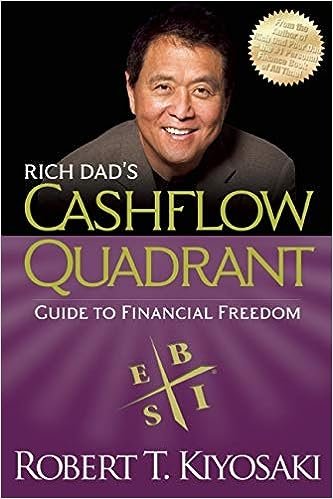Rich Dad's Cashflow Quadrant: Guide to Financial Freedom

Physical Copy:
Audiobook:
By: Robert Kiyosaki
Rating: A
This is the sequel to Robert Kiyosaki’s best selling book, Rich Dad, Poor Dad. I have read this several times over the years and it strikes me differently in every season of life. The Cashflow Quadrant is a financial concept that classifies people into four distinct categories based on how they earn their income.
The four quadrants are:
- Employee (E): Individuals in this quadrant work as employees for others, trading their time and skills for a fixed salary or wage. While this provides stability, employees often have limited control over their income and are subject to the decisions of their employers.
- Self-Employed (S): This quadrant includes self-employed professionals, small business owners, and freelancers. They have more control over their income compared to employees but may still find themselves trading time for money and handling various aspects of their business.
- Business Owner (B): People in this quadrant own and operate businesses that can function independently of their direct involvement. They create systems, hire employees, and leverage their resources to generate income. Business owners focus on scalability and building assets that generate cash flow.
- Investor (I): Investors are individuals who make money by putting their capital into various investments such as stocks, real estate, and other income-generating assets. They aim to achieve financial freedom by allowing their investments to grow and generate passive income.
Main Concept: Achieving financial freedom and substantial wealth requires transitioning from the E and S quadrants to the B and I quadrants in some substantial form.
Build systems and businesses that produce cash flow. Grow your skill set as an investor. Invest the cash flow from your businesses to put your money to work for you.
Making the journey from Self-Employed to a Business Owner struck me hard this time through.
In our business, we have developed a strong Investor quadrant. But we have a long way to go on the business quadrant. Many self-employed people simply own their job. They cannot remove themselves from the business and have the business continue to grow and thrive. To scale a company to any large degree requires teams of talented individuals and not just one super-productive owner. That is the spirit of this mental exercise. How can I move our company from being dependent on the owner to accomplish tasks and drive growth to a team of rockstars accomplishing that?
Ask yourself these questions:
- Do I want to 10x my business?
- If I were to leave for an entire year, would my business be better or worse when I returned? What about 6 months? Or one month?
- What self work do I need to do to allow this to happen?
- What are the next 5 strategic moves I need to make to move toward this?
Recommended.
